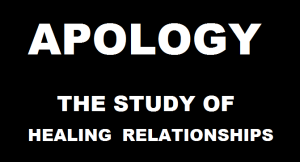[fusion_builder_container hundred_percent=”yes” overflow=”visible”][fusion_builder_row][fusion_builder_column type=”1_1″ background_position=”left top” background_color=”” border_size=”” border_color=”” border_style=”solid” spacing=”yes” background_image=”” background_repeat=”no-repeat” padding=”” margin_top=”0px” margin_bottom=”0px” class=”” id=”” animation_type=”” animation_speed=”0.3″ animation_direction=”left” hide_on_mobile=”no” center_content=”no” min_height=”none”]
In life, when somebody wrongs you, the first thing you truly want is an apology. A good one. And your customers are no different when they feel they have somehow been wronged by your company. But how can your reps effectively convey regret to your customers when faced with cases needing an apology?
In psychology, it is widely accepted that an apology has several components, and without each of these pieces, the apology feels insincere and falls flat. These components are:
1. A clear statement to convey regret for what has happened
A customer who is upset about an issue needs to feel heard. The first step is to unequivocally state “I am sorry” or “I apologize”. Resist the urge to qualify the apology with traditional platitudes that might minimize your sincerity or their grievance like “…that you feel that way”. Keeping the opening statement simple prevents opportunities for an apology to veer off course before it has the chance to get to the meat of the issue.
2. An acknowledgement of what the offense was in simple, direct language
Your package was late, you were overcharged for the last month’s services, you appointment was rescheduled last minute, etc. – let them know you understand what went wrong.
3. Showing empathy through an understanding of how the offense has affected the other party
The best way to make someone feel heard is to simply restate what you have heard. This behavior is called verbal mirroring or the “echo effect” and is crucial to building trust and rapport with the aggrieved party. By repeating what you have been told, you are not only demonstrating that you have been actively listening to the customer’s complaint, but that you have empathy for him, as evidenced by your desire to understand and acknowledge his experience and its effects.
4. Requesting forgiveness
By asking a customer for his forgiveness, you are accomplishing two things. The first is that you are showing him that your apology up to this point was not just hot air, that you truly do want to repair the relationship with him and move forward. The second is that you are giving him back a sense of control over the situation: he is now the one in the position of power rather than the aggrieved party who had something done to him.
The ability to apologize effectively, whether within a personal or business relationship, is an invaluable skill that must be mastered. It will not only preserve the preexisting relationship, it will foster a stronger relationship going forward. Next time you are apologizing – use the steps above, and your customers will feel heard and valued, and be more open to your next task: proposing a resolution.[/fusion_builder_column][/fusion_builder_row][/fusion_builder_container]

